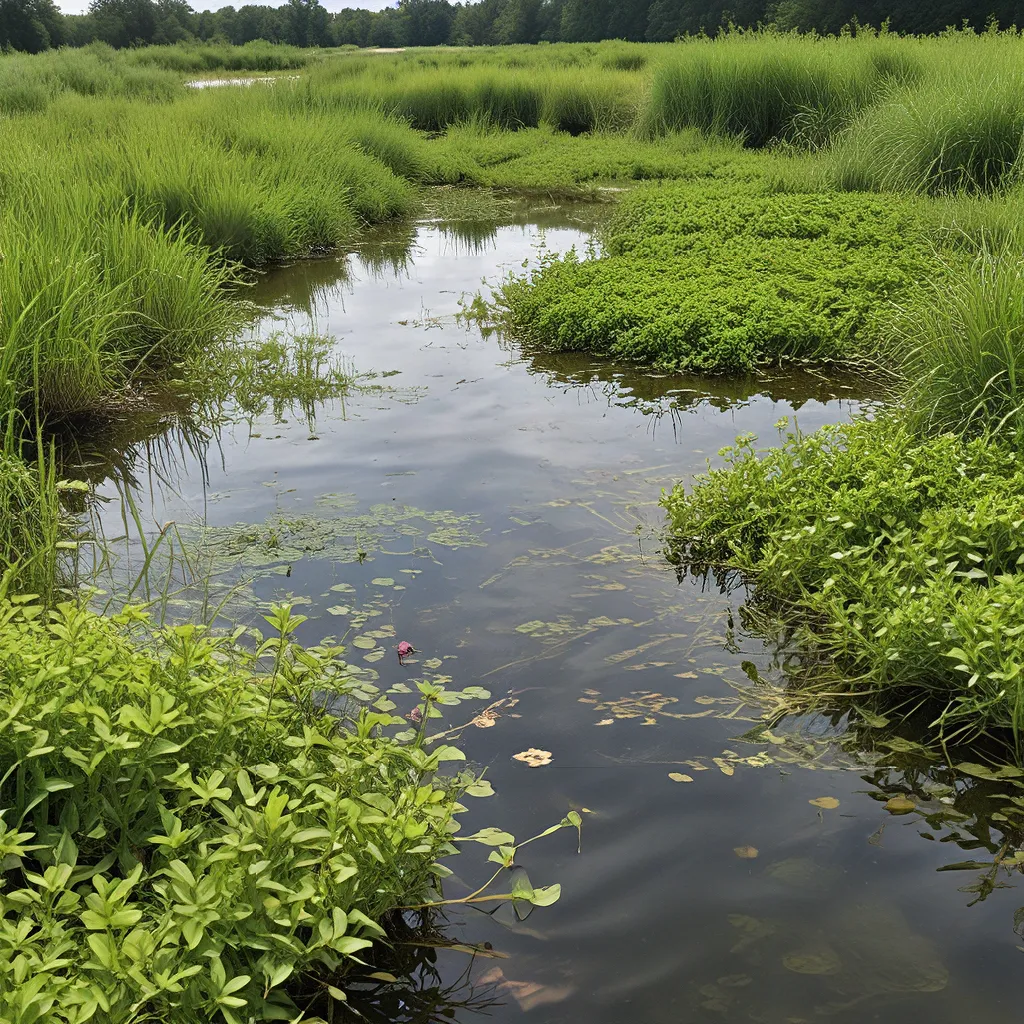
As an environmentally-conscious individual, I’ve always been fascinated by the incredible power of nature to heal and restore our precious ecosystems. And when it comes to the challenge of wastewater treatment, one innovative solution has caught my eye: the incredible process of phytoremediation.
Phytoremediation, quite simply, is the use of plants to remove, transfer, stabilize, or degrade contaminants in the soil, water, or air. It’s a natural, cost-effective, and sustainable approach to addressing a wide range of environmental issues, including the treatment of wastewater. And as I’ve delved deeper into this topic, I’ve been truly amazed by the sheer potential of this remarkable technology.
Aquatic Plants: Nature’s Water Filters
At the heart of phytoremediation are aquatic plants, those remarkable organisms that thrive in water-based environments. These aquatic champions possess an uncanny ability to absorb, metabolize, and even transform a wide array of harmful contaminants, including heavy metals, pesticides, and even organic pollutants.
One of the key factors that make aquatic plants so effective in wastewater treatment is their massive surface area. As these plants grow and expand, their roots, stems, and leaves create an intricate network that can effectively filter out and trap a variety of pollutants. And the beauty of it is that this process happens naturally, without the need for energy-intensive mechanical systems or harsh chemical treatments.
The Incredible Versatility of Phytoremediation
What’s truly remarkable about phytoremediation is its versatility. These plant-based systems can be tailored to address a wide range of wastewater challenges, from municipal sewage treatment to industrial effluent management. And the best part? They can be implemented at a fraction of the cost of traditional wastewater treatment methods.
Recent studies have highlighted the effectiveness of phytoremediation in removing a diverse array of contaminants, including heavy metals, pesticides, and even pharmaceutical residues. By strategically selecting the right aquatic plant species, wastewater treatment facilities can create highly efficient and sustainable natural filtration systems that complement or even replace energy-intensive mechanical processes.
The Remarkable Power of Hemp and Duckweed
As I continued my research, I came across two particularly fascinating aquatic plants that have shown immense promise in the realm of phytoremediation: hemp and duckweed.
Hemp, long revered for its versatility and sustainability, has proven to be a remarkable natural cleaner. Its robust root system can effectively remove heavy metals, pesticides, and even radioactive contaminants from water, making it an ideal candidate for wastewater treatment applications.
And then there’s duckweed, a tiny yet mighty aquatic plant that has captured the attention of researchers and wastewater treatment professionals alike. Duckweed’s ability to rapidly absorb and metabolize a wide range of pollutants, including nitrogen, phosphorus, and even certain organic compounds, has made it a standout in the world of phytoremediation.
Integrating Phytoremediation into Wastewater Treatment
As I’ve delved deeper into the world of phytoremediation, I’ve come to appreciate the immense potential it holds for the future of wastewater treatment. By strategically integrating aquatic plant-based systems into existing treatment processes, wastewater facilities can unlock a host of benefits, including:
- Reduced energy consumption: Phytoremediation systems often require far less energy than traditional mechanical methods, leading to significant cost savings and a smaller carbon footprint.
- Improved water quality: Aquatic plants can remove a wide range of contaminants, ensuring that the treated water is cleaner and safer for discharge or reuse.
- Enhanced ecosystem restoration: By harnessing the power of nature, phytoremediation can help restore the delicate balance of aquatic ecosystems, benefiting both wildlife and surrounding communities.
- Increased sustainability: Phytoremediation is a renewable, eco-friendly approach to wastewater treatment, aligning perfectly with the growing demand for more sustainable solutions.
Of course, the integration of phytoremediation into existing wastewater treatment systems is not without its challenges. Factors like climate, plant species selection, and system design will all play a critical role in ensuring the long-term success of these natural filtration systems. But as the field of phytoremediation continues to evolve and our understanding of these remarkable plants deepens, I can’t help but feel optimistic about the immense potential that lies ahead.
Embracing the Future of Wastewater Treatment
As I reflect on the incredible power of phytoremediation, I can’t help but feel a sense of excitement and wonder. This natural, sustainable approach to wastewater treatment is poised to revolutionize the way we think about and manage our water resources. By harnessing the inherent abilities of aquatic plants, we can unlock a future where clean water is not just a luxury, but a fundamental human right.
And as I consider the role that wastewater treatment services like Alpha Wastewater can play in this journey, I’m filled with hope. These forward-thinking organizations, committed to innovation and environmental stewardship, are the catalysts that can help propel phytoremediation into the mainstream, transforming our wastewater treatment practices for the better.
So, as I look ahead, I can’t help but feel inspired. The future of wastewater treatment is bright, green, and decidedly natural. And with the power of phytoremediation at our fingertips, I believe we can create a more sustainable, resilient, and equitable world for all.